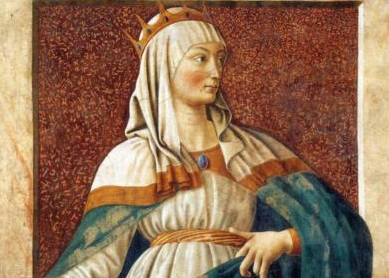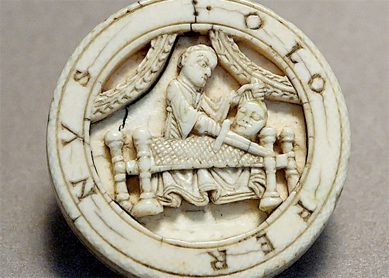Very briefly, the biblical book of Esther narrates the marriage of Esther, a Jew, to the Persian king Ahasuerus. This monarch learns of Esther’s Jewish identity only after Haman, the story’s villain, plots to annihilate the Jews, including Esther and her guardian Mordecai, who (like Haman) serves the king. Among the numerous subplots is the personal hatred that Haman bears for Mordecai, whom Haman conspires to hang on “a gallows fifty cubits high” (
Thus, midway through the story (
Knowledgeable readers laugh when Haman goes into such vivid detail to describe what he is sure is in store for him. The king’s command to Haman confirms that Haman is in for a rude awakening, to say the least: “Quickly, take the robes and the horse, as you have said, and do so to the Jew Mordecai who sits at the king’s gate. Leave out nothing that you have mentioned.”
The full significance of this reversal of fortune is not lost on Zeresh, Haman’s wife. Only a little while earlier, she had urged her husband to construct the gallows for Mordecai. Little did they know that it would be Haman, not Mordecai, who would be hanged on it (
But there is more. King Ahasuerus is portrayed as indifferent and indolent rather than treacherous and tyrannical. When, for example, Haman proposes that “a certain people” within the king’s empire were not following established laws and customs, the incurious monarch gives Haman the power to destroy them—without even asking who they are (
Thus it is supremely ironic that a misperception on the king’s part brings Haman down. After Esther reveals that she herself would be a victim of Haman’s plot, along with all the rest of her people (until this moment, Haman does not realize she is Jewish), the king momentarily leaves the room in a fury. In a last-ditch attempt to save his life, Haman as supplicant throws himself “on the couch where Esther was reclining” (
As for the Jews, they are saved. Mordecai is promoted, and, we suppose, Esther and Ahasuerus live happily ever after. All of this proving, to confirm the sentiment of
Bibliography
- Fox, Michael V. Character and Ideology in the Book of Esther. 2nd ed. Grand Rapids, MI: Eerdmans, 2001.
- Berlin, Adele. Esther. Philadelphia: Jewish Publication Society, 2001.
- Moore, Carey A. Esther: Introduction, Translation, and Notes. Anchor Bible 7B. Garden City, N.Y.: Doubleday, 1971.
- Levenson, Jon D. Esther: A Commentary. Louisville: Westminster John Knox, 1997.



